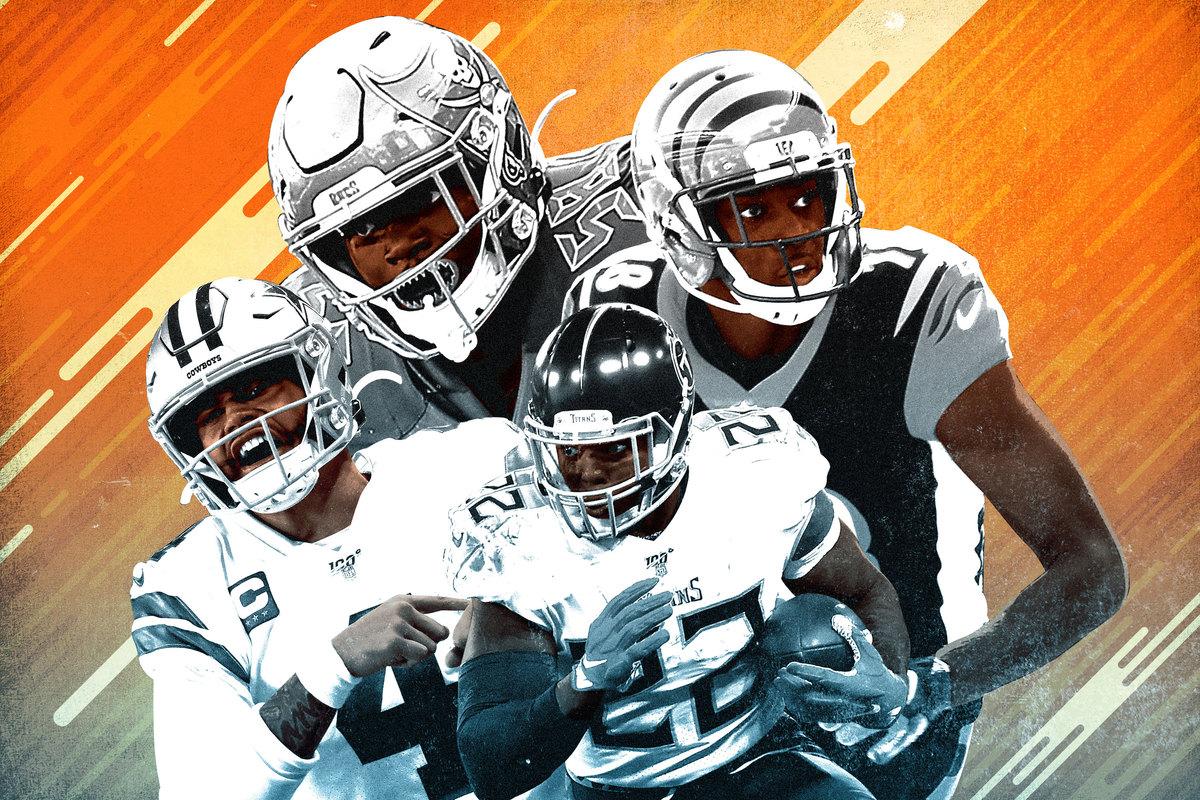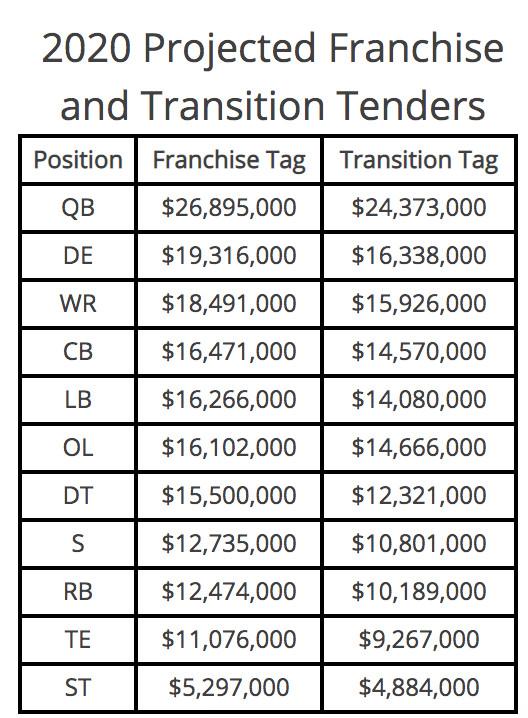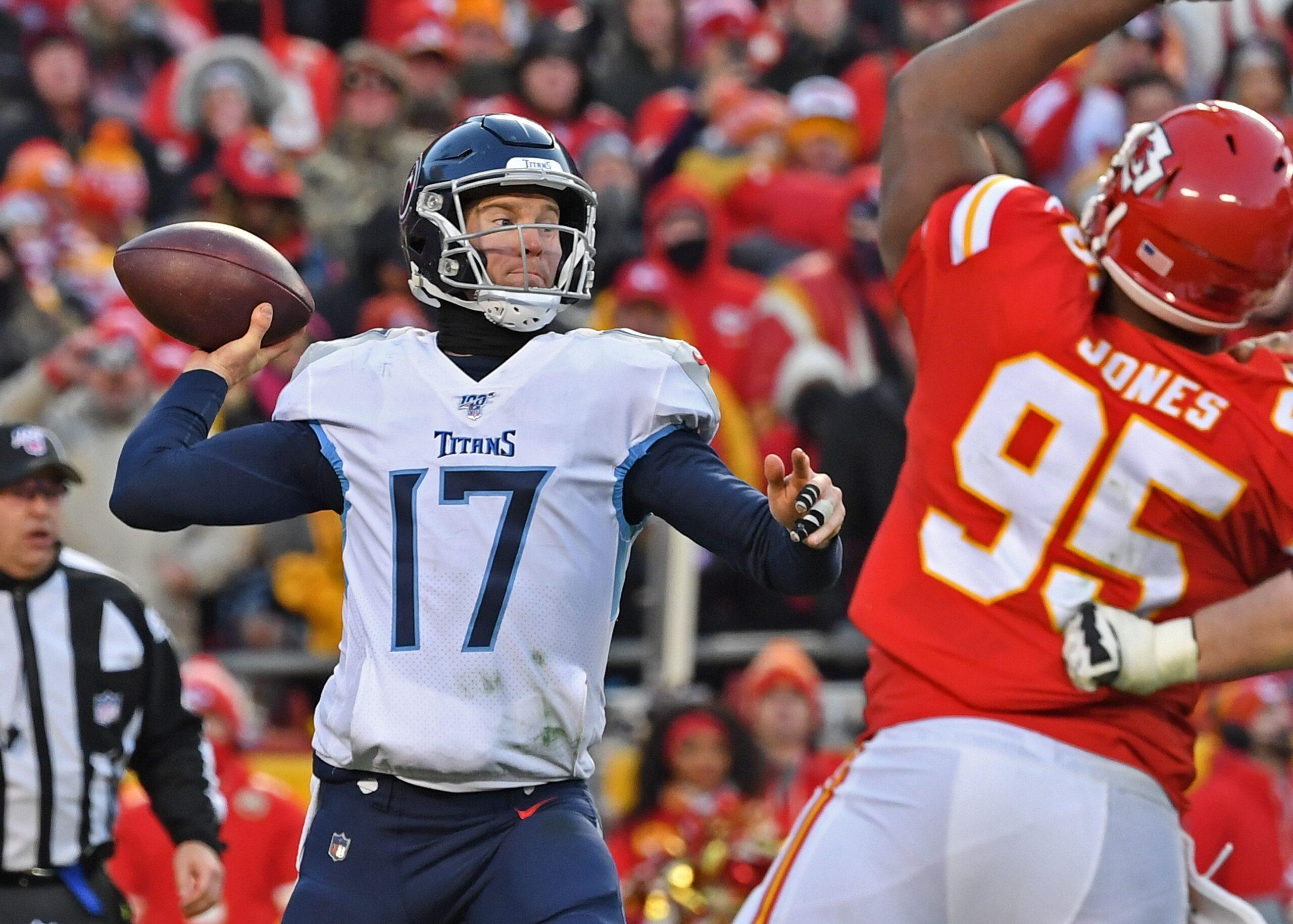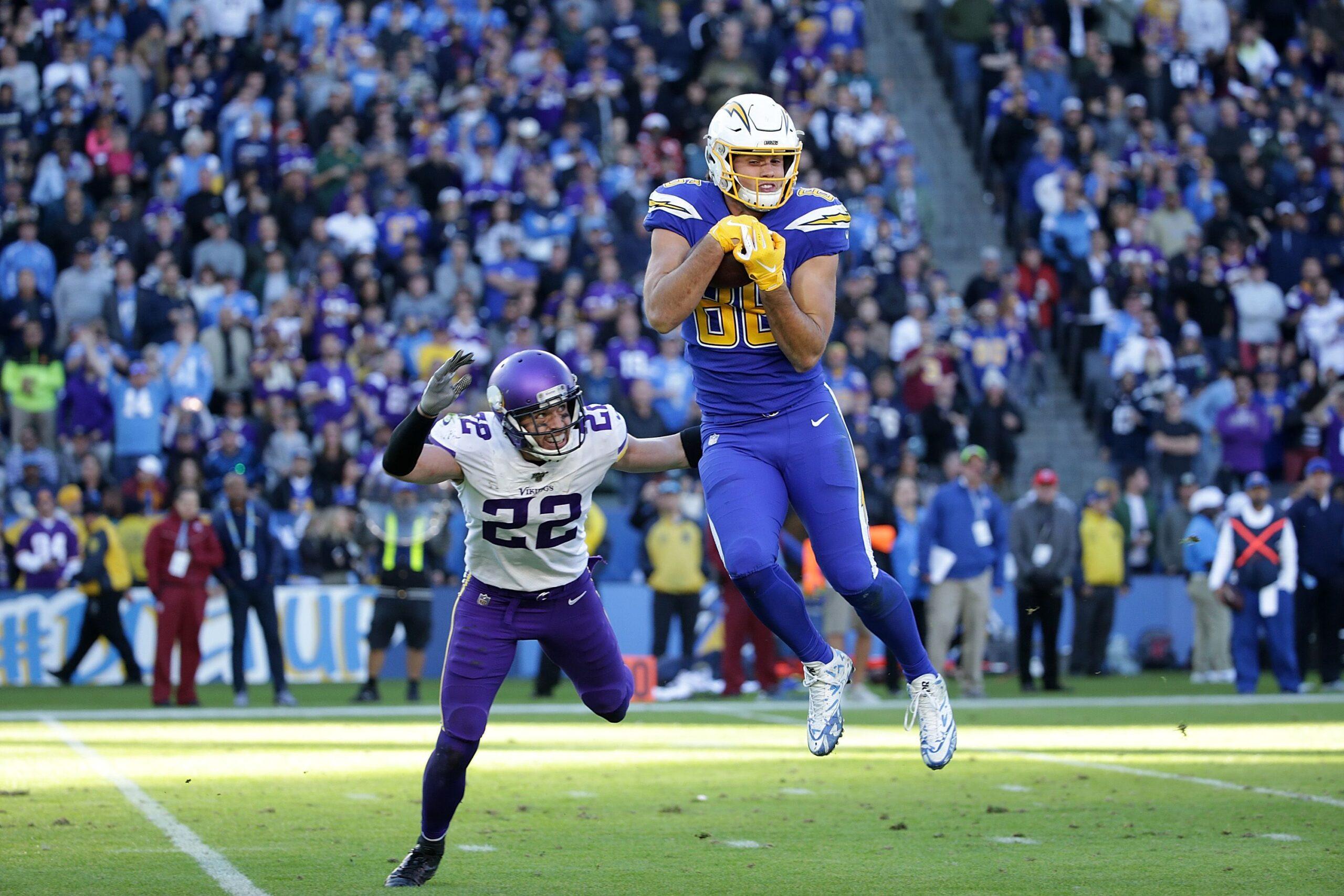
The NFL listens to what fans want.
Fix pass-interference review!
Throw fewer flags!
Make the franchise tag more complicated!
Oh, was that last one not on your list? Well, that’s what the NFL has done. As if the franchise tag was not complicated enough to wrap one’s mind around, this year’s process is even more byzantine. This is the final season of the current collective bargaining agreement, and teams essentially have two franchise tags this season instead of one. That means they have more options—and more ways to make a mistake.
The tag is about control. It is a tool teams can use to force one of their free agents to stay on a one-year contract for a predetermined price based on the player’s position. Teams love the tag. It lets them keep players who would otherwise leave, and usually at an artificially lower price. Players hate the tag. They get a raise, but usually not as much as they’d earn on the open market. They also have to play the season in a contract year (again), so any potential injuries not only carry physical costs, but financial ones too. Since players loathe playing on a contract year, they often reach an agreement on a long-term deal with their team over the summer, which replaces the franchise tag. Thus, for many players the tag price becomes the floor of contract negotiations. Teams can franchise-tag a player beginning on Thursday, February 27, and the deadline to do so is Thursday, March 12 (these dates were originally each two days earlier, but the league and NFLPA pushed the dates back as part of CBA negotiations).
This year, teams can use two versions of the tag. The regular franchise tag is still an option, but teams can also use the transition tag. The transition tag is for slightly less money than the franchise tag and allows a player to sign elsewhere, but the original team has the right to match any offer from a different team. If the original team declines to match the offer, they don’t get any picks back. Here are the specific prices as projected by the salary cap website Over the Cap.

Let’s look through the teams with the biggest decisions to make around the tag(s) this year.
Dallas Cowboys: Dak Prescott and Amari Cooper
Quarterback franchise tag price: $26.9 million
Quarterback transition tag price: $24.4 million
Wide receiver franchise tag price: $18.5 million
Wide receiver transition tag price: $15.9 million
The Cowboys are in a bind. Dak Prescott’s contract has expired, and owner Jerry Jones has admitted the team has every intention of signing Prescott to a long-term contract. But the Cowboys are in the rare position of having little leverage. Unlike other players, Prescott has so many endorsements that he has the financial cushion to play hardball. Dallas has said it wants to sign Prescott before the tag deadline, but considering it hasn’t spoken to Prescott’s agents since September, that seems unlikely. The Cowboys are probably going to have to tag Prescott, which will only postpone their problems.
If the Cowboys use the franchise tag on Prescott, they’d be expected to use the transition tag on Amari Cooper. The Cowboys certainly want to keep Cooper in Frisco. Dallas traded a first-rounder for Cooper in the middle of the 2018 season, and he was immediately an offense changer. He wasn’t as consistent last year given some foot injuries, but he is still among the league’s best when healthy. He’s just 25 years old, so he’s entering his prime athletic years. Keeping Cooper is also a high priority considering the team’s coming investment in Prescott. It doesn’t make sense to split them up when their best work has come together. But Jerry Jones’s eyes may be bigger than his stomach.
Dallas already has the second-most expensive offensive line in football. Ezekiel Elliott is the most expensive running back in football. Prescott might become the most expensive football player. Are they going to make Cooper one of the highest-paid receivers too? The only thing scarier than paying top-of-the-market rates at almost every offensive position is not giving Cooper his money. Will Prescott end up the highest-paid player in football but be stuck throwing to Michael Gallup and Jason Witten’s mummy?
”I’m not known as a guy that gets hand cramps when I’m writing checks,” Jerry Jones said last season. True, but the cap might go dry before his hand cramps.
Tampa Bay Buccaneers: James Winston and Shaquil Barrett
Quarterback franchise tag price: $26.9 million
Quarterback transition tag price: $24.4 million
Linebacker franchise tag price: $16.3 million
Linebacker transition tag price: $14.1 million
The Winston experience is a rollercoaster, and by the end of the season, everyone riding it felt sick. He led the league in pass attempts, passing yards, and interceptions, becoming the first quarterback to throw 30 touchdowns and 30 picks in one season. Now he is a free agent, and the Bucs have to decide whether they want to go again or if they should get in line for a different ride.
“I would think within a few weeks we’ll have a decision which way we want to head,’’ head coach Bruce Arians told reporters at the end of the season. “Will we let [the decision] out? Probably not because you lose your leverage on that one, too, so stay tuned.’’
Consider us tuned. Bay’s other offseason priority will be keeping Shaq Barrett onboard. Barrett signed a one-year deal after leaving Denver and promptly led the league in sacks with 19.5. Barrett hates moving from city to city, so the Bucs have a real chance to work out a deal with him before or after the tag deadline.
Unless they are fixated on a quarterback in free agency or the draft, they may look at Winston as their best but extremely imperfect option. Winston may embody the new quarterback purgatory—not good enough to win a Super Bowl, but not bad enough that the team will get a top 10 pick to replace him.
One thing to note: Winston got LASIK surgery to correct his eyesight this offseason. Considering how many of Jameis’s picks were of the “How did you not see that defender?” variety, it’s tempting to think Winston’s interceptions could get cut in half. But it’s just as possible that the surgery changes nothing. That puts Arians and GM Jason Licht in a tough spot. It might be wiser to stick with Winston rather than get in the long line for a different quarterback, especially when the one they get might not be as good as this one. But if this ride is anything like the last one, they might end up throwing up all over themselves.

Tennessee Titans: Ryan Tannehill and Derrick Henry
Quarterback franchise tag price: $26.9 million
Quarterback transition tag price: $24.4 million
Running back franchise tag price: $12.5 million
Running back transition tag price: $10.2 million
The Titans have built their team identity around Derrick Henry, but now Henry is a free agent and the team has to decide what it wants to be. The recent history of teams giving big deals to running backs is filled with red flags. From Todd Gurley to David Johnson to Devonta Freeman to Jerick McKinnon, basically zero of the running backs who have signed a large second contract with their team provided a worthy return (the Ezekiel Elliott contract is still too early to judge). The Titans would be betting that Henry would be different, and that their offense could build around him too. He hasn’t become a huge part of the passing game yet, but Tennessee would be doubling down on the play-action-heavy style coordinator Arthur Smith ran under Tannehill.
The Titans also have to either retain Tannehill or find a new quarterback. Tannehill was one of the best passers on a per-throw basis once he took over as the starter in Week 7, and while it would be unwise to expect him to return to those lofty totals, he clearly added some flavor the Titans offense was missing before. It would be surprising if the Titans didn’t bring Tannehill back, whether on the tag or on a short-term deal at an annual basis in that $26 million a year range.
Cincinnati Bengals: A.J. Green
Wide receiver franchise tag price: $18.5 million
Wide receiver transition tag price: $15.9 million
Cincinnati’s first practice of the 2019 season was held at the site of the NFL’s first game in Dayton, Ohio, to commemorate the 100th anniversary of the league. Cute. But the field wasn’t ready, and there were rocks and pebbles, according to receiver Tyler Boyd. Star receiver A.J. Green injured his ankle that day and did not play for the Bengals in 2019. It’s unclear whether he’ll ever play for them again. There were months of uncertainty about Green’s return, which was originally scheduled for September, and it’s unclear why Green didn’t return, but the Bengals’ miserable season likely didn’t help. Cincy’s saving grace may be selecting Joe Burrow, who would likely be the best quarterback Green has ever played with. Green getting $18.5 million on the tag to stay for Burrow’s rookie year isn’t a bad option for anyone involved. If Burrow isn’t as good as advertised, Green can leave next year. If Burrow is good, staying in Cincy might pay off. The Bengals would be wise not to alienate one of their most respected players.
Kansas City: Chris Jones
Defensive tackle franchise tag price: $15.5 million
Defensive tackle transition tag price: $12.3 million
Jones was the most underrated defender in football, but the Super Bowl changed that. Jones disrupted Garoppolo throughout the game, pressuring the 49ers quarterback into an interception on the second play of the second quarter. Jones is one of the best interior pass rushers in football when healthy (Aaron Donald might be the only one definitively better). Kansas City doesn’t have much cap space, but shelling out to keep Jones in Kansas City is an easy decision. Having one of the handful of defensive tackles who can provide an elite pass rush up the middle is a perfect complement to Kansas City’s high-scoring offense. Expect the Chiefs to tag Jones and work out a deal with him over the summer.

Los Angeles Chargers: Hunter Henry
Tight end franchise tag price: $11.1 million
Tight end transition tag price: $9.3 million
Hunter Henry has played 41 games in four years. After missing the entire 2018 season with a torn ACL, he returned in 2019 for 12 starts and career highs in targets (76), catches (55), and receiving yards (652). Henry blossomed toward the end of the season, which makes tagging the injury-prone tight end wise from the team perspective. If Hunter can put together his first healthy season as a starter in his pro career, he could get paid well. But another injury-riddled year could convince the Chargers to let him go in 2021.
Atlanta Falcons: Austin Hooper
Tight end franchise tag price: $11.1 million
Tight end transition tag price: $9.3 million
It’s really difficult to have cap issues in a league where the accounting is all fake, but the Falcons have done it. The team is so locked into its large deals with its core players that they don’t have room to re-sign one of their homegrown stars. The Falcons are going to let Hooper reach free agency, meaning they will not tag him, and they’ve basically admitted they are not going to keep him. On Tuesday, Hooper posted a not-so-cryptic goodbye photo on Instagram.
The Falcons have locked themselves into numerous deals that make them inflexible for this season. Paying Hooper would be hard, but replacing him will be harder.
Jacksonville Jaguars: Yannick Ngakoue
Defensive end franchise tag price: $19.3 million
Defensive end transition tag price: $16.4 million
Ngakoue had a lot of bad blood with the old Tom Coughlin–led front office, but head coach Doug Marrone is still around, so it’s unclear whether Ngakoue’s issues with the organization are a thing of the past or present. What we do know is he is one of the best young pass rushers in football. That alone puts him on pace for $20 million annually. The Jaguars were so bad with players under Coughlin the NFLPA sent letters to players advising them to think twice against signing with Jacksonville, so the team might be smart to keep players now when they may not be able to sign anyone of note in free agency. Jacksonville already traded star cornerback Jalen Ramsey, but holding onto Ngakoue is a smart priority. Perhaps the Jaguars would try a sign-and-trade like the one the 49ers did with the Chiefs for Dee Ford last offseason, though Ngakoue might fetch a higher price if the right team is interested.
Baltimore Ravens: Matthew Judon
Linebacker franchise tag price: $16.3 million
Linebacker transition tag price: $14.1 million
Last year, the Ravens let Za’Darius Smith leave for the Packers, Terrell Suggs leave for the Cardinals, and inside linebacker C.J. Mosley leave for the Jets. The defense dropped all the way from the league’s third-most efficient defense to … the league’s fourth-most efficient defense. That stability is due in part to adding Earl Thomas and Marcus Peters to the secondary, but also to the Ravens’ ingenuity. Baltimore is second only to the Patriots in replacing talent that leaves in free agency by hoarding draft picks. Still, letting Judon go would be a serious commitment to their internal pipeline process. Judon emerged from relative obscurity to become one of the most important defenders on a contender. Letting him go would leave an unclear picture at pass rusher. That picture was unclear before Judon proved himself, but the Ravens’ depth behind him is suspect. General manager Eric DeCosta told reporters at the NFL combine this week that the tag was “on the table.”
Denver Broncos: Justin Simmons
Safety franchise tag price: $12.7 million
Safety transition tag price: $10.8 million
Head coach Vic Fangio got outstanding safety play from his players in Chicago, and he turned Simmons into a star in 2019. Simmons blossomed into the highest-graded safety (minimum 100 snaps) by Pro Football Focus in 2019. Broncos president of football operations John Elway told reporters this week the team would tag Simmons if they can’t reach a long-term deal by the deadline. Denver is already at risk of losing cornerback Chris Harris Jr., defensive end Derek Wolfe, and defensive tackle Shelby Harris, so retaining the team’s breakout star of 2019 would give them some key continuity into 2020.
Los Angeles Rams: Dante Fowler and Cory Littleton
Linebacker franchise tag price: $16.3 million
Linebacker transition tag price: $14.1 million
Littleton is L.A.’s inside linebacker while Fowler is an edge-rushing outside linebacker, but under the tag system they play the same position (no, it does not make any sense). The Rams need both of these players, but odds are they’ll be able to keep only one. The team is locked into its core players, and the only person in that group who earned his paycheck in 2019 was Aaron Donald. Jared Goff has a $36 million cap hit this year that will be tough to deliver value on. Running back Todd Gurley has knee issues that kept him as a decent rotational runner last year, but he’s paid like a star. Receiver Brandin Cooks has struggled after being diagnosed with four concussions in less than two years. Now the Rams have to sign cornerback Jalen Ramsey to what is likely the biggest cornerback contract in NFL history after sending two first-round picks to Jacksonville for him. Those deals mean the Rams would barely be able to scrape together the rest of their team, especially at expensive positions like edge rusher. Tagging Fowler wouldn’t suggest they want to keep him around long term as much as it shows that they understand they couldn’t come close to replacing him in free agency. Considering the relative value of the two players for the same price, Fowler fills the more expensive role as a pass rusher and is more likely to stay. But the Rams could also try to gauge the trade market and swap one of the linebackers for draft picks, like the Chiefs did when trading Ford to the 49ers last year. That would allow the Rams to transition-tag the player they keep at a lower price while collecting some picks, which they need desperately. The Rams haven’t had a first-round pick since the 2016 draft, and they aren’t scheduled for another one until 2022—a six-year gap without a first-rounder.

